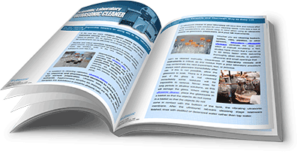3 Good Questions About Precision Scales & Analytical Balances
Digital scales and balances are precision instruments. People using these instruments should be able to answer these questions:
1. How secure is your weighing data?
2. How accurate are your scales?
3. What is the degree of protection from dust and moisture?
How secure is your weighing data?
An answer can be found in Kern’s 32 bit software for Windows 95/98/NT/XP. It communicates between balances and programs such as Excel, Word, Access and others via a serial interface. Weight increments are inserted by the touch of a key or on a time-controlled basis to the current cursor location. This eliminates typing errors that may occur during manual inputting of weight increments.
Graphical displays of values and data include interpolations, date and time stamps. In addition to compiling and storing weighing data the connection software also supports direct comparison of values, statistical calculations, the density of fluids and solids, the humidity or moisture content of a product and counting scale totals.
How accurate are your scales? Checking balances for their accuracy is within the scope of controlling measuring equipment in accordance with ISO 9000 and GLP. In many instances certificates of calibration are required before the scale is put in to operation and reissued periodically thereafter depending on how and where the scale is used. Calibration determines the relationship between the displayed value and true mass by comparing it with a known mass. Certain scales, such as Kern’s ABT series automatically recalibrate based on four scenarios such as four hours after the previous calibration or when there is a temperature fluctuation of 0.5oC (0.9oF). Other scales such as the Kern ITB-ITS-ITT series are manually recalibrated using precision external adjusting weights. Procedures regarding recalibration exercises should be spelled out in your company’s Quality Management manual.
What is the degree of protection from dust and moisture? Precision digital scales and balances used in laboratory and clean room environments are not generally subjected to dust and moisture typically encountered in manufacturing or packaging lines. Industrial platform scales, however, are subjected not only to dust but also to dirt and contaminants that must be washed off.
For these applications scales should have an Ingress Protection (IP) rating that normally has two numbers. The first number ranges from zero to 6 and details protection against solid objects. The second number ranges from zero to 8 and details protection against liquids. Zero signifies no protection. The higher the number the better the protection. For example, Kern FES/FEJ industrial scales show an IP rating of 65. The 6 indicates they are totally protected against dust and the 5 signifies they are protected against low pressure jets of water from all directions – or limited ingress. Higher liquid ingress numbers may be available for special circumstances and can relate to flooding or to immersion.
——————
What are your company’s policies and procedures relating to record keeping? What about recalibration of scales and balances? Have there been instances where records were crucial in confirming weighing results? How do you clean your scales?
